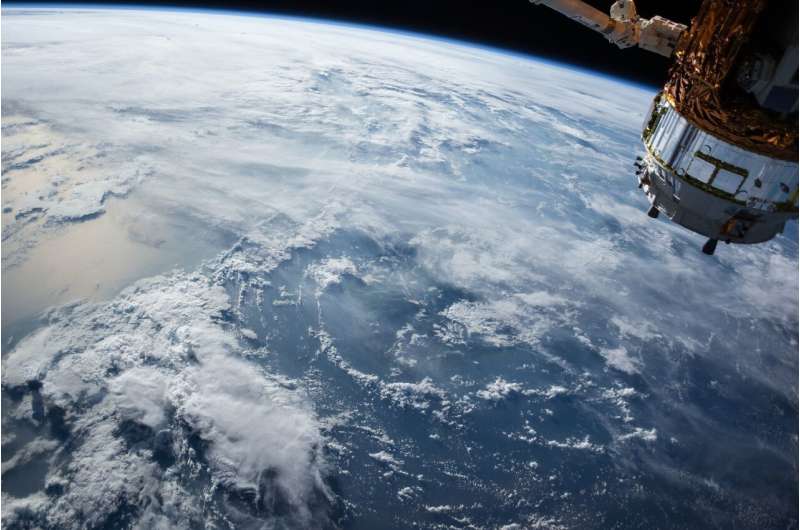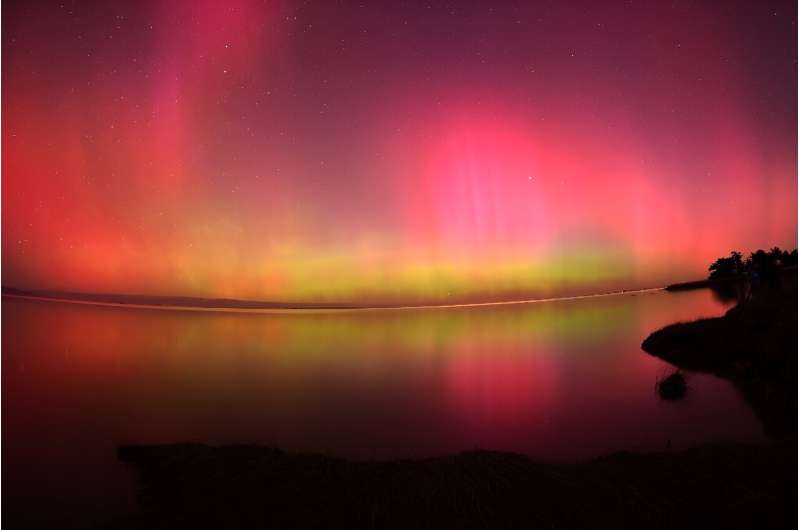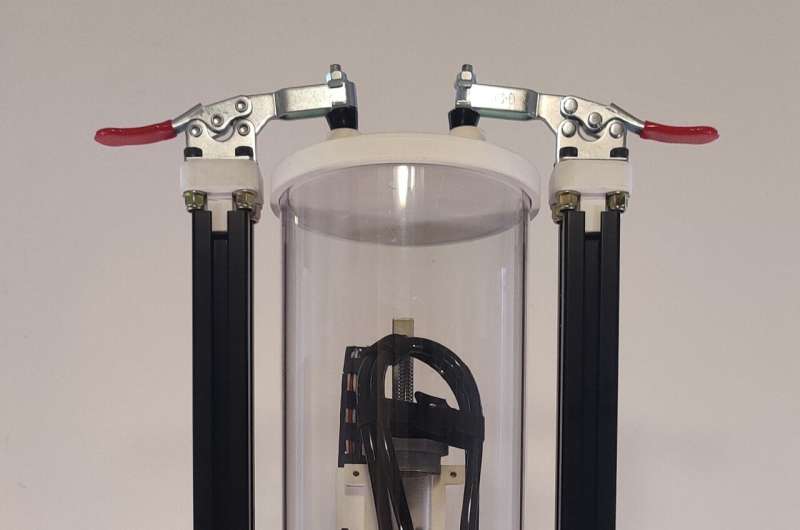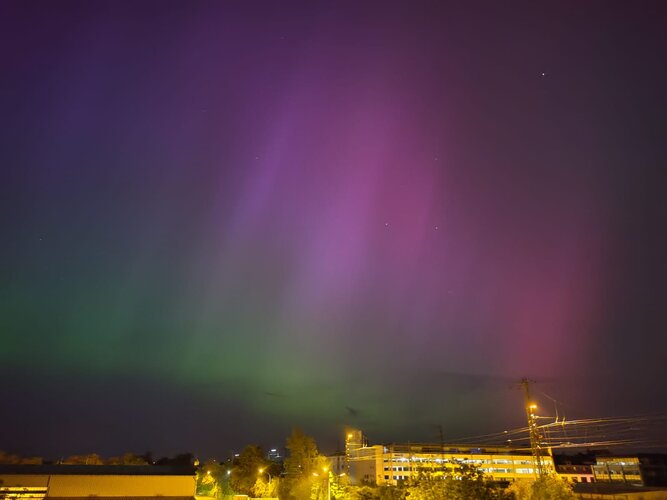NASA prepares for twin launches of climate science cubesats
Saturday, 18 May 2024 20:27

'Dad's going up in a rocket!' French businessman set for launch
Saturday, 18 May 2024 05:30
He arrived in Texas, tried on his flight suit for the first time, and is now preparing to live out his childhood dream.
On Sunday, French entrepreneur Sylvain Chiron will board a Blue Origin rocket and blast off into space, joining the select group of humans who have ventured beyond Earth's bounds.
"I never thought I'd get to do this," the 52-year-old, who hails from the mountainous southeastern region of Savoy, told AFP in an interview two days before his adventure.
"We're going to be astronauts for 15 minutes, so a bit like pretend astronauts, but astronauts nonetheless!"
Blue Origin's spaceflights are brief hops just beyond the edge of space and back again—but still allow passengers to admire the curve of the Earth while free floating during a few minutes of weightlessness.
First crewed flight of Boeing Starliner postponed again
Saturday, 18 May 2024 05:24
The first crewed launch of Boeing's Starliner to the International Space Station has been delayed again due to a technical issue, NASA said Friday.
The launch in Florida was scheduled for Tuesday but NASA said it is now planned for May 25 to allow teams to further assess a helium leak linked to the service module, which sits on top of the rocket.
Earlier this month, a Starliner launch was postponed just hours before lift-off, with the astronauts already strapped in, due to a separate technical issue.
"The additional time allows teams to further assess" the helium leak, NASA said on its website.
The two astronauts, Butch Wilmore and Suni Williams, are in the meantime staying in Houston, Texas until the mission is ready.
It is another delay in the highly anticipated mission which has faced years of delays and comes at a challenging time for Boeing, as safety questions surround the century-old aerospace titan's commercial aviation arm.
NASA is banking on Starliner's success for its goal of certifying a second commercial vehicle to carry crews to the International Space Station.
'Danger behind the beauty': More solar storms could be heading our way
Saturday, 18 May 2024 05:20
Tourists normally have to pay big money and brave cold climates for a chance to see an aurora, but last weekend many people around the world simply had to look up to see these colorful displays dance across the sky.
Usually banished to the poles of Earth, the auroras strayed as far as Mexico, southern Europe and South Africa on the evening of May 10, delighting skygazers and filling social media with images of exuberant pinks, greens and purples.
But for those charged with protecting Earth from powerful solar storms such as the one that caused the auroras, a threat lurks beneath the stunning colors.
"We need to understand that behind this beauty, there is danger," Quentin Verspieren, the European Space Agency's space safety program coordinator, told AFP.
Lithuania becomes 40th nation to join NASA's Artemis Accords
Friday, 17 May 2024 21:13 Lithuania has become the 40th nation to sign NASA's Artemis Accords, a pact that defines the peaceful exploration of space.
Aušrinė Armonaitė, Lithuania's minister of economy and innovation, signed the accords Wednesday at the Radisson Blu Lietuva hotel in the capital Vilnius, with U.S. Ambassador Kara McDonald in attendance.
"Welcome to the Artemis Accords family, Lithuania,"
Lithuania has become the 40th nation to sign NASA's Artemis Accords, a pact that defines the peaceful exploration of space.
Aušrinė Armonaitė, Lithuania's minister of economy and innovation, signed the accords Wednesday at the Radisson Blu Lietuva hotel in the capital Vilnius, with U.S. Ambassador Kara McDonald in attendance.
"Welcome to the Artemis Accords family, Lithuania," NASA, ESA will search for 'signs of life' on Mars
Friday, 17 May 2024 20:33 NASA and the European Space Agency will search together for signs of life on Mars, the U.S. space administration announced Thursday.
They will collaborate on the ExoMars Rosalind Franklin rover, an ESA-led mission that will launch in 2028 to explore Mars. Under terms of the deal, NASA will provide special heaters and unique parts of the rover propulsion system that are required to land
NASA and the European Space Agency will search together for signs of life on Mars, the U.S. space administration announced Thursday.
They will collaborate on the ExoMars Rosalind Franklin rover, an ESA-led mission that will launch in 2028 to explore Mars. Under terms of the deal, NASA will provide special heaters and unique parts of the rover propulsion system that are required to land Startup’s chip design aims to boost satellite computing power
Friday, 17 May 2024 20:05

Ariane 6 launches Replicator for 3D printing in open space
Friday, 17 May 2024 16:27
Europe's newest rocket soon launches, taking with it many space missions each with a unique objective, destination and team at home, cheering them on. Whether into Earth orbit to look back and study Earth, peer out to deep space or test important new technologies, Ariane 6's first flight will showcase the versatility and flexibility of this impressive, heavy-lift launcher.
The Replicator mission, from Warsaw, Poland, and Berlin, Germany, based startup Orbital Matter, will launch on Ariane 6 to demonstrate a new 3D printing technology in orbit, potentially opening the door to new space structures that wouldn't have been possible otherwise, made using fewer resources.
The name "Replicator" is a homage to the many forms of advanced manufacturing methods in science fiction, capable of making complex products, ready to use: Star Trek's kitchen microwave-like Replicators could synthesize meals on demand; the Von Neumann Probe is a conceptualized spacecraft capable of exponentially self-replicating; and in the Stargate series, Replicators are a highly advanced machine race capable of reproducing themselves indefinitely.
Week in images: 13-17 May 2024
Friday, 17 May 2024 14:20
Week in images: 13-17 May 2024
Discover our week through the lens
Omnispace reports interference from Starlink direct-to-device payloads
Friday, 17 May 2024 10:33

NASA and ESA complete agreement for cooperation on Mars rover mission
Friday, 17 May 2024 09:09








